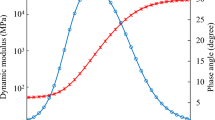Abstract
The backcalculated modulus of subgrade reaction (k-value), elastic modulus of concrete (E), and effective thickness (heff) given the deflection basin from the Falling Weight Deflectometer (FWD) testing has been extensively used in evaluating the response and performance of in situ concrete pavements. Traditional backcalculation assumption of an interior-loaded infinite slab can lead to large errors in backcalculated parameters for edge-loaded continuously reinforced concrete pavement (CRCP) because of the load position and closely-spaced transverse cracks. In this paper, the backcalculaion formulas for edge-loaded CRCP with various crack spacing was proposed based on 2-D finite element analysis. According to the backcalculated results, both positive and negative temperature differentials of less than 16 °F had limited impact. As expected, the larger the lateral offset of the plate, the greater the impact on backcalculated results given the minimum error in heff reaching 5.0% with a 4 in. lateral offset. In order to verify the proposed backcalculation method, a field CRCP test section with different base types and reinforcement ratio were evaluated. The impact of edge support provided by base layer was also shown to be significant, given the support of a 2 ft overwidth base showing the same impact of approximately 1 in. extra thick base.










Similar content being viewed by others
Notes
1 ft = 0.3048 m.
1 in. = 0.0254 m.
1 psi = 6894.76 Pa.
References
Tayabji SD, Stephanos PJ, Gagnon JS, Zollinger DG (1998) Performance of continuously reinforced concrete pavements volume II: field investigations of CRC pavements. FHWA-RD-94-179. PCS/Law Engineering, Beltsville, Maryland
Tayabji SD, Zollinger DG, Vederey JR, Gagnon JS (1998) Performance of continuously reinforced concrete pavements volume III: analysis and evaluation of field test data. FHWA-RD-94-180. PCS/Law Engineering, Beltsville, Maryland
Choi P, Kim DH, Lee BH, Won MC (2016) Evaluation of structural responses of continuously reinforced concrete pavement (CRCP) using falling weight deflectometer. Can J Civ Eng 43(1):28–39
Roesler J, Huntley J, Amirkhanian A (2011) Performance of continuously reinforced concrete pavement containing recycled concrete aggregates. Transp Res Rec 2253:32–39
American Association of State Highway and Transportation Officials. AASHTO Guide for Design of Pavement Structures. Washington, D.C., 1993
Ioannides AM, Barenberg EJ, Lary JA (1989) Interpretation of falling weight deflectometer results using principles of dimensional analysis. In: Proceedings of 4th international conference on concrete pavement design and rehabilitation, Purdue University, pp 231–247
Khazanovich L, Tayabji SD, Darter MI (2001) Backcalculation of layer parameters for LTPP test sections, volume I: slab on elastic solid and slab on dense-liquid foundation analysis of rigid pavements. FHWA-RD-00-086. ERES Consultants, Columbia, Maryland
McGhee KH (1974) Experience with continuously reinforced concrete pavements in Virginia. Transp Res Rec 485:14–24
Ioannides AM, Thompson MR, Barenberg EJ (1985) Westergaard solutions reconsidered. Transp Res Rec 1043:13–23
Crovetti JA (1994) Design and evaluation of jointed concrete pavement systems incorporating free draining base layers. Ph.D. thesis. University of Illinois at Urbana-Champaign, Urbana
King D, Roesler JR (2014) Backcalculation procedure for bonded concrete overlays of asphalt pavement. Transp Res Rec 2457:72–79
Zhang Y, Roesler JR (2018) Improved backcalculation procedure for continuously reinforced concrete pavement. Transp Res Rec 2672(40):336–347
Hoffman MS, Thompson MR (1981) Mechanistic interpretation of nondestructive pavement testing deflections. UILU-ENG-81-2010. University of Illinois at Urbana-Champaign, Urbana
Ioannides AM (1990) Dimensional analysis in NDT rigid pavement evaluation. J Transp Eng 116(1):23–36
Hall KT, Darter MI, Hoerner TE, Khazanovich L (1997) LTPP data analysis phase I: validation of guidelines for k-value selection and concrete pavement performance prediction. FHWA-RD-96-198. ERES Consultants, Champaign
Westergaard HM (1939) Stresses in concrete runways of airports. In: Proceedings of 19th highway research board annual meeting, vol 19, pp 197–202
Ioannides AM, Khazanovich L, Becque JL (1992) Structural evaluation of base layers in concrete pavement systems. Transp Res Rec 1370:20–28
Tabatabaie AM, Barenberg EJ (1978) Finite element analysis of jointed or cracked concrete pavements. Transp Res Rec 671:11–18
Khazanovich L (1994) Structural analysis of multi-layered concrete pavement systems. Ph.D. thesis. University of Illinois at Urbana-Champaign, Urbana
Siddharthan R, Sebaaly PE, Javaregowda M (1992) Influence of statistical variation in falling weight deflectometers on pavement analysis. Transp Res Rec 1377:57–66
Khazanovich L, Gotlif A (2002) ISLAB2000 simplified friction model. Paper 02-3529. In: Proceedings of the 81st transportation research board annual meeting. Transportation Research Board, National Research Council, Washington
Acknowledgements
This publication is partially-based on the results of Illinois State Toll Highway Authority Project RR-14-9168 and Natural Science Foundation of Jiangsu Province of China BK20190604. The authors would like to acknowledge the support of Steve Gillen formerly of the Illinois State Toll Highway Authority and Dan Gancarz of Applied Research Associates. The contents of this paper reflect the view of the authors, who are responsible for the facts and accuracy of the data presented herein.
Author information
Authors and Affiliations
Corresponding author
Ethics declarations
Conflict of interest
The authors declare that they have no conflict of interest.
Additional information
Publisher's Note
Springer Nature remains neutral with regard to jurisdictional claims in published maps and institutional affiliations.
Rights and permissions
About this article
Cite this article
Zhang, Y., Roesler, J.R. & Huang, Z. A method for evaluating CRCP performance based on edge-loaded FWD test. Mater Struct 53, 46 (2020). https://doi.org/10.1617/s11527-020-01481-0
Received:
Accepted:
Published:
DOI: https://doi.org/10.1617/s11527-020-01481-0




